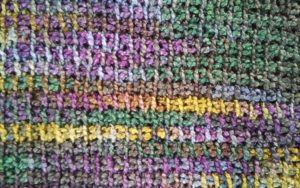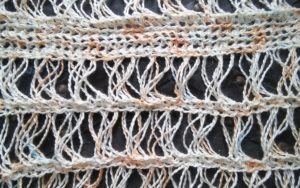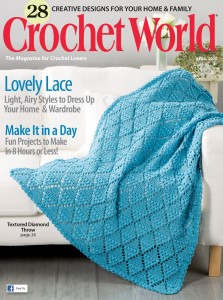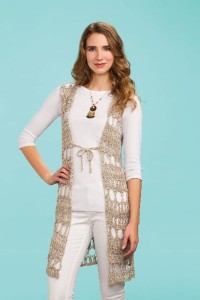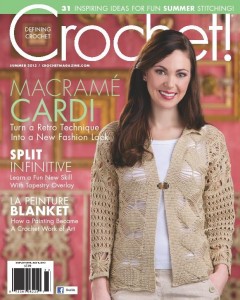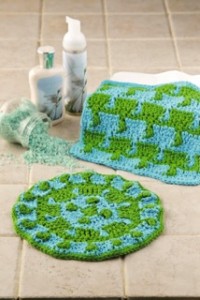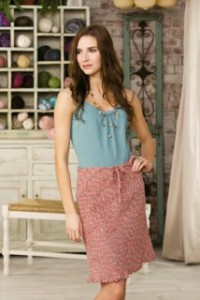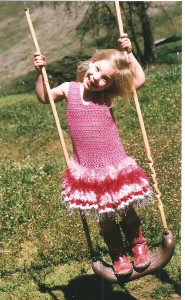 There are many different fibers that can make up a yarn, and they all offer a different quality. I find that some rayon yarns offer a really interesting texture and drape to my fabric.
There are many different fibers that can make up a yarn, and they all offer a different quality. I find that some rayon yarns offer a really interesting texture and drape to my fabric.
I picked up a couple of skeins of Interlacements Rick Rack yarn a few years back. I originally made a skirt for myself, but the skeins have such great yardage that I still have enough yarn to create more.
The yarn is not smooth, but instead has reminds me of well rick rack, as it has a wavy characteristic. As a result the fabric it creates has an appearance that reminds me of chenille, as it is plush and the light seems to be absorbed. So I do not think I will utilize this yarn for heavily textured stitch work, such as popcorns or cables. The properties of the rayon content does cause this fabric to grow a bit, as I have discovered with skirt. I feel that working stitches on the diagonal help keep it in shape, but the rayon lends itself to great drape. Reflecting on it, the wavy rick rack of the yarn probably helps this yarn keep it shape better than most rayon yarns, yet keeping the cool to the touch, silky quality that rayon is known for.
I would caution against working this yarn in open and lacy stitches, as the color changes can tend to distract from the open work, but it seems to sing when worked in just simple stitch patterns. I offend want to over think designs and come up with something I have never tried before, but this yarn is not one that I afford this option, as it I prefer it as simple is better.
Overall I have been impressed with the way the yarn has held up over time. I made the skirt 5 years ago and it still looks good. It still drapes well, the color is good, and is still feels silky.

